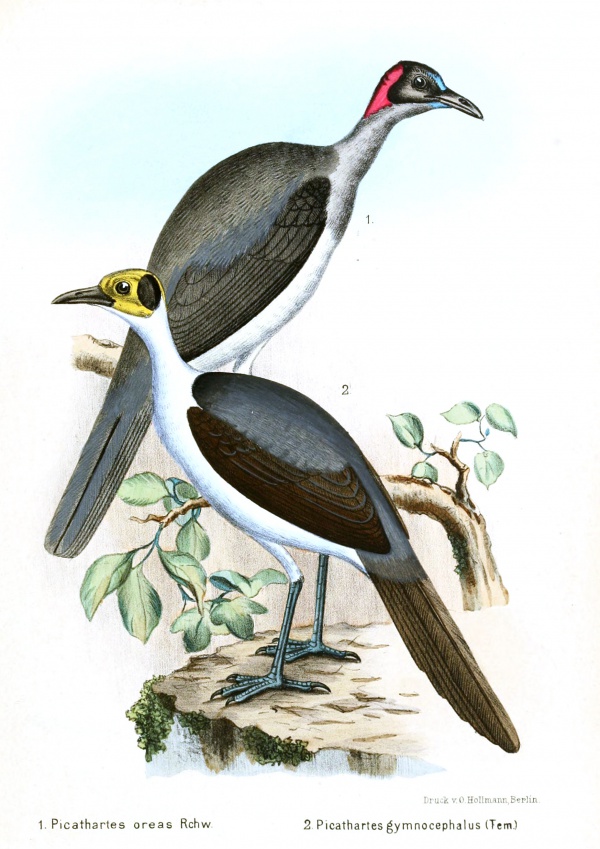Facts About Grey-necked rockfowl
The grey-necked rockfowl, also known as the grey-necked picathartes, is a captivating medium-sized bird inhabiting the rocky terrains of dense rainforests in West Africa. These birds range from southwest Nigeria through Cameroon, Equatorial Guinea, to southwest Gabon, although their populations are often fragmented.
This bird is notable for its distinctive appearance, featuring grey upperparts, a light grey breast, and a lemon-colored belly. The most striking characteristic is its head, adorned with powder blue and carmine skin. In terms of diet, the grey-necked rockfowl primarily feeds on insects, often following ant swarms, but occasionally consumes plant material.
The grey-necked rockfowl is a monogamous species, meaning it mates for life. They nest either in colonies or solitarily, typically selecting rock surfaces near water sources. Their nests are intricate constructions made from mud and grass fibers, usually located in caves or on cliffs. Each nest contains two eggs, and the birds lay eggs twice a year.
Regrettably, the grey-necked rockfowl is considered vulnerable due to habitat destruction, isolated populations, and low breeding success. Conservation efforts include national laws protecting the species, international action plans, and habitat preservation in national parks.
The indigenous peoples of the region hold the grey-necked rockfowl in high esteem, and the bird has become a symbol of ecotourism. However, historical collection efforts have contributed to a decline in their numbers. Current conservation initiatives aim to protect this unique bird and its specialized habitat, ensuring its survival for future generations.

 Republic of the Congo
Republic of the Congo